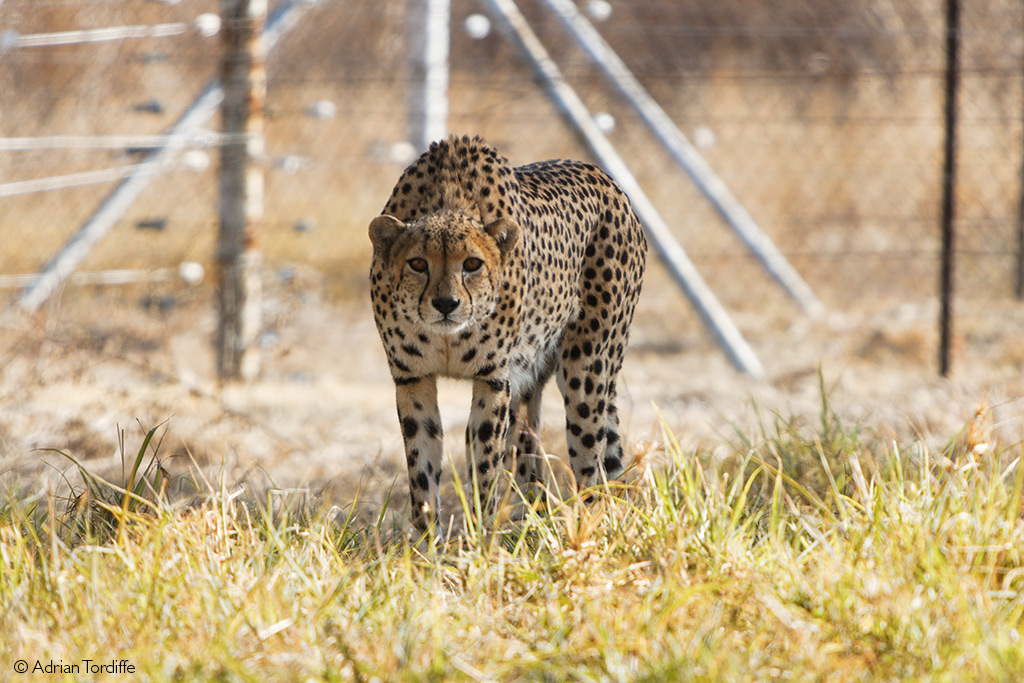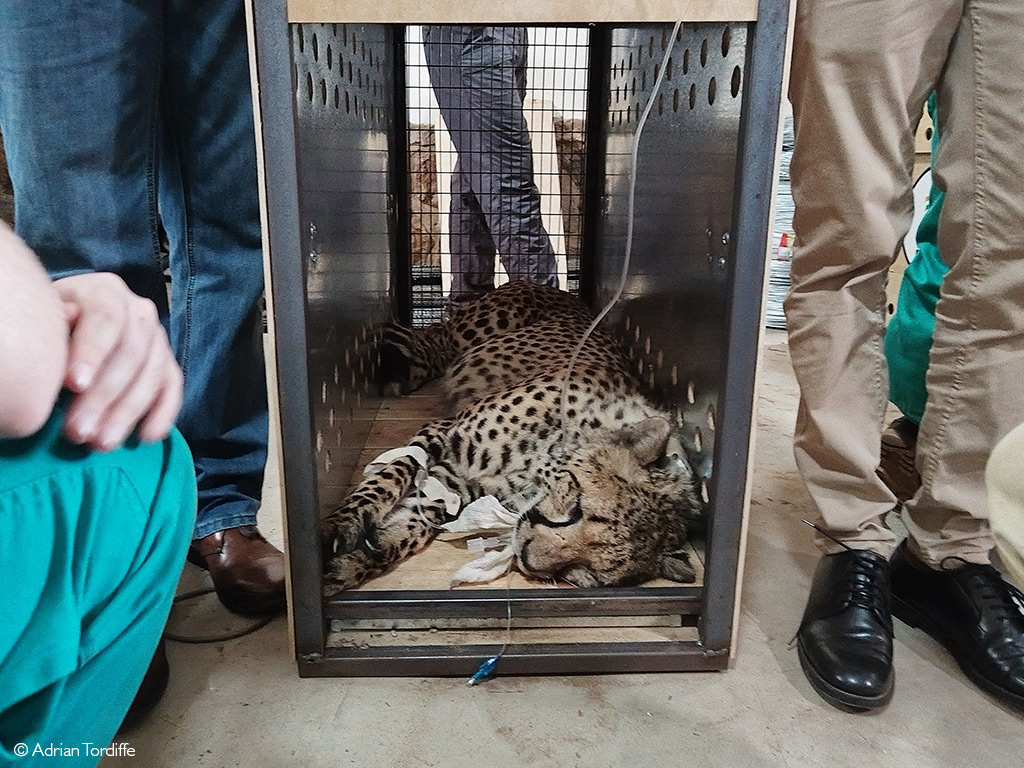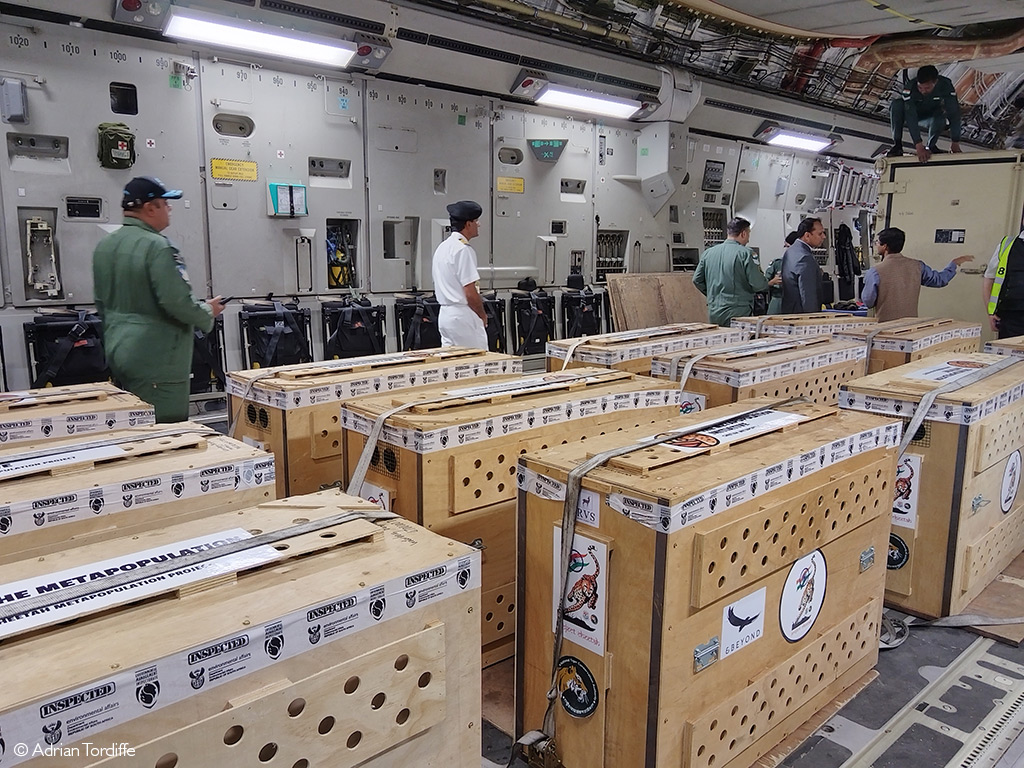
On Saturday, the 18th of February, 12 more southern African cheetahs landed in India to join eight of their cohorts in Kuno National Park. Theoretically, these trailblazing cheetahs are intended to herald the long-term return of wild cheetahs to India. This project has divided conservationists along academic, ethical and philosophical lines. Critics have labelled the reintroduction “ecologically unsound”, “a vanity project”, and “grossly expensive”. Equally, experts with abundant experience in cheetah conservation have thrown their weight behind the project, highlighting the importance of restoring cheetahs to parts of their historic range and the potential benefits to Indian conservation.
Cheetahs have been extinct in India for over seven decades, but plans for their return have been afoot for many years. The first eight individuals from Namibia (after a period in quarantine) made the journey to Kuno National Park in September 2022. Amid the media furore over Project Cheetah, two groups of highly esteemed scientists – one for and one against – penned their opinions in correspondence published in Nature Ecology & Evolution. Each article neatly summarises the arguments put forward in various publications since the arrival of the first cheetahs. Read together, they highlight the complexities of the issues at play.
The argument against Project Cheetah
The first article, published in December 2022, is titled “Introducing African cheetahs to India is an ill-advised conservation attempt” and was authored by a group of experienced big-cat conservationists and scientists (Gopalaswamy et al., 2022). Many of the authors have been critical of the project since its inception. They argue that the costly plan has the potential to serve as a “distraction” instead of aiding global cheetah conservation.
Though there has yet to be scientific consensus on subspecies divisions, the Cat Classification Task Force of the IUCN Cat Specialist Group recognised four distinct subspecies of cheetah. Of these, the Southeast African cheetah (Acinonyx jubatus jubatus) and the Asiatic cheetah (Acinonyx jubatus venaticus) are relevant to the debate at hand. Before their extinction, the cheetahs found in India would have been Asiatic cheetahs. At present, the only remaining Asiatic cheetahs are found in Iran and are classified as Critically Endangered. In the opinion of Gopalaswamy et al. (2022), there are unknown ecological, disease and genetic risks associated with replacing Asiatic cheetahs with African ones.
The authors indicate that the plan to translocate cheetahs from Africa to India is based on three unsubstantiated claims. The first is that cheetahs have run out of space in Africa, the second is that India has sufficient space and habitat to support a cheetah population, and, finally, that translocations have successfully restored cheetah range in the past.
They cite contemporary research from the Maasai Mara from one of the authors (Dr Femke Broekhuis) that shows that cheetahs utilise disproportionately large home ranges and occur at low population densities. The authors argue that this, along with (presumably) declining cheetah numbers in Africa, makes them unsuitable as a source population for translocations. Based on this research, they also believe that the studies in Kuno National Park for the action plan may have substantially overestimated the carrying capacity. According to the action plan, the calculated carrying capacity was based on a density estimate from Namibia, which Gopalaswamy et al. (2022) suggest is outdated and possibly inaccurate.
The site of the first cheetah translocations – Kuno National Park – is a 748 km2 (74,800 hectares) park located just over 300km south of Delhi. It is unfenced and surrounded by densely populated villages and farms. Gopalaswamy et al. (2022) imply that the size and surrounding anthropogenic pressures (along with some 500 feral cattle within the park) make it a poor habitat choice for the cheetahs. Furthermore, they argue that the other destinations named in the action plan for future translocations are equally inappropriate.

Gopalaswamy et al. (2022) also distinguish between “free-ranging” and “fenced-in” cheetahs. Most cheetahs in South Africa and many from Namibia come from smaller fenced reserves. These animals cannot naturally immigrate or emigrate, so the populations must be intensively managed. The cheetahs sourced for the translocations came from such a setup. The authors write that to the best of their knowledge, they know of no reintroduction successes where fenced-in cheetahs have been successfully reintroduced into an unfenced area, even within Africa. They argue that where these fenced-in populations are managed independently without achieving self-sustaining populations, there will be an urgency to find release sites that could “trigger unplanned, hastily executed translocation programmes”.
They write that they anticipate that “adopting such a speculative and unscientific approach will lead to human-cheetah conflicts, death of the introduced cheetahs or both, and will undermine other science-based species recovery efforts, both globally and within India”.
Instead, the scientists call on India to redirect the nearly US$ 60 million total cost of Project Cheetah towards global cheetah conservation efforts, including habitat protection and connectivity and enhancing human-cheetah relations in Iran, Africa, or both. Alternatively, they suggest revising the current action plan to reintroduce cheetahs to India using a “science-based approach” to rigorously assess the policies and methods utilised. The focus should be securing India’s threatened savannahs and grasslands and avoiding the disruption of other ongoing conservation efforts, such as the reintroduction of Asiatic lions.
They conclude that “there is an urgent need for international bodies, such as the IUCN and the wider community of cheetah and carnivore biologists, to re-evaluate the purpose and practice of such intercontinental, large carnivore translocation efforts”.

The argument for Project Cheetah
In response to this correspondence, a group of vets, scientists, ecologists and cheetah conservationists published their dissenting opinion in an article titled “The case for the reintroduction of cheetahs to India” (Tordiffe et al., 2023). Many of the authors have been intimately involved in the project since its inception, and all were involved in the scientific advisement on both the Indian and southern African sides of the operation.
Tordiffe et al. (2023) argue that cheetahs once occupied an ecological niche in India, which has been left vacant since their extinction. They cite previous research showing that the return of carnivores is particularly important in restoring the functional ecology of ecosystems. They suggest that the widespread human-wildlife conflict and poaching that precipitated the extinction of cheetahs in India have since been controlled through legislation and effective enforcement. Furthermore, suitable habitat, prey availability and anthropogenic pressures were thoroughly assessed before selecting Kuno National Park and other protected areas as potential reintroduction sites.
According to the Project Cheetah action plan, approximately 100,000 km2 (10 million hectares) of legally protected reserves in India lie within the historic range of the cheetah and could potentially support breeding cheetah populations. Tordiffe et al. (2023) disagree with Gopalaswamy et al.’s (2022) approach of using East African cheetah population densities to estimate the potential carrying capacities of the selected release sites in India. Instead, they suggest that the biomass of suitable prey will determine such densities.
In answer to Gopalaswamy et al.’s (2022) discussion around the Asiatic cheetahs, Tordiffe et al. (2023) point to the IUCN guidelines for population reintroductions. These require that potential source populations have adequate genetic diversity and that removing a determined number of individuals would not compromise the source population. Given the recent announcement by the Iranian Department of Environment that only 12 confirmed Asiatic cheetahs remain, there is no way they could be utilised for this initiative. Instead, Tordiffe et al. (2023) argue that the southern African cheetah population has the greatest documented genetic diversity and is sufficiently large to supply founding individuals without negatively affecting their numbers.

The authors highlight that unpublished data indicates that the managed cheetah metapopulation in southern Africa of around 500 cheetahs is currently growing at a rate of 8.8% per year. These animals occur predominantly on smaller, fenced reserves, and translocation is vital to this metapopulation management. In South Africa alone, population viability analysis indicates that this population could sustain the removal of 29 individuals without detriment. Though they acknowledge that there are still areas in Africa that could theoretically support reintroduced cheetahs, the authors suggest that few of the sites are feasible in reality. They suggest that there are several socioeconomic, cultural and religious differences that contribute to a greater tolerance for large predators in India than in Africa, as evidenced by other large carnivore conservation initiatives in India.
Tordiffe et al. (2023) also refute the suggestion that there have been no successful translocations of “fenced-in” cheetahs into “free-ranging” environments. They cite the release of 22 cheetahs into the unfenced Zambezi Delta in Mozambique in August 2021, along with the release of 36 cheetahs onto Namibian farmlands, including some unfenced properties. With respect to the risk of disease transmission, three of the authors (and other experts) have conducted a comprehensive disease risk analysis. Though most diseases were judged to be of low or very low risk, those deemed medium risk are managed through a combination of vaccination programmes and antiparasitic treatments.
Finally, the response concedes that the suggestion by Gopalaswamy et al. (2022) that money for the project might be better invested in other cheetah conservation initiatives is “intriguing”. However, the authors suggest that this is unlikely, given that governments tend to prioritise conservation projects in their own jurisdictions.
Though Tordiffe et al. (2023) highlight the cheetahs’ potential role as an umbrella species that will benefit the “broader biodiversity conservation and livelihood goals in India”, they acknowledge that this must be evaluated once the project is completed.

Final thoughts
On the 26th of January 2023, the South African Department of Forestry, Fisheries and the Environment confirmed that India and South Africa had signed a Memorandum of Understanding. Under the terms of the MoU, 100 more cheetahs will be translocated to India over the next ten years to establish a healthy and diverse population. At the outset, there are likely to be significant losses. If the project is successful, it will likely be counted as one of the most daring conservation initiatives of the 21st century. And more importantly, cheetahs will once again stalk the grasslands and savannahs of India. If it fails, the cheetah will die, millions of dollars will be lost, and the project will be consigned to the learning curve of history.
Few meaningful conservation initiatives could ever be labelled as risk-free. With ever-shrinking wild spaces and changing climates, conservation is facing a turning point. Considered interference and substantial risks may be necessary to protect the earth’s remaining megafauna and reverse the mistakes of the past. But with these decisions will come complex ethical debates that cut to the heart of the intrinsic value of an animal, the definition of “natural”, the importance of genetics and the balance of utilitarianism. There are unlikely to be easy answers or universal agreement.
References
Gopalaswamy, A. M. et al. (2022) “Introducing African Cheetahs to India Is an Ill-Advised Conservation Attempt,” Nature Ecology & Evolution
Tordiffe, A.S.W. et al. (2023) “The case for the reintroduction of cheetahs to India,” Nature Ecology & Evolution
Jhala, Y.V., et al. (2021). Action Plan for Introduction of Cheetah in India. Wildlife Institute of India, National Tiger Conservation Authority and Madhya Pradesh Forest Department.
Read more about the Cheetah Conservation Fund, that helped assist wildlife authorities in India with Project Cheetah.
Read more on all there is to know about cheetahs here.
To comment on this story: Login (or sign up) to our app here - it's a troll-free safe place 🙂.![]()






